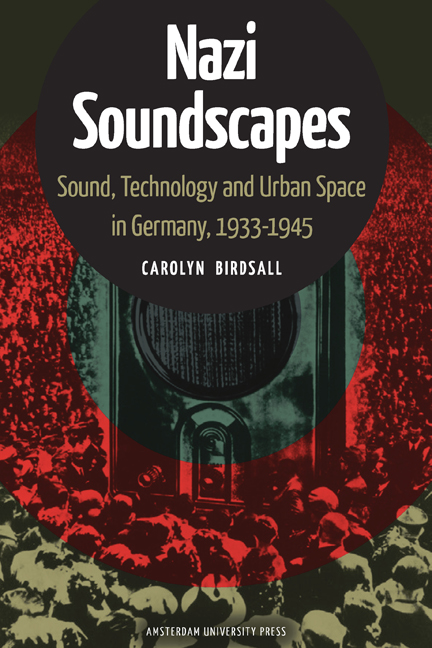Afterword: Echoes of the Past
Published online by Cambridge University Press: 20 January 2021
Summary
“The memories are coming back to me as I talk about them now and they’ve been buried inside me for a long time. The sounds are now ringing in my ears.”
“Even today I can still hear the sirens. […] The impact and explosions are still perceptible now. Mainly because of the fear, the anxiousness of the adults.”
“After the war, it took months before I stopped waking up terrified, and no longer ran into the cellar if I heard engine sounds.”
“No, we didn't have jazz. That was not considered ‘proper music.’ […] In June 1945 I went to a birthday party where this music was played: Benny Goodman, Glenn Miller. That was ‘Freedom!’ It was the first time I had feeling of being free.”
In the previous chapter, I examined the case of the documentary film Hitler's Hit Parade with regard to present-day difficulties in remembering and representing the Nazi past. While the film uses an unbroken sequence of (mainly sentimental) hit songs from the 1930s and 1940s, I argued that this continuous soundtrack provided a critical frame for considering the recycling of visual images and film footage from the Nazi era. Rather than suggest that these songs offer a stable historical chronology, I have shown that Hitler's Hit Parade foregrounds the act of selection and narrative organisation of archival image and sound. In doing so, it also configures a confrontation with the truth claims of the documentary genre and the “prosthetic” media memories of those viewers who themselves do not remember the Nazi period, but have developed accumulated forms of visual memory through popular cultural representations of history (Landsberg 2004: 28). The central role given to melodies and lyrics in the film might seem an unusual strategy, since such popular songs are often conceived as encouraging normative accounts of cultural memory and even a nostalgic interpretation of past eras and events. However, since the manner with which contemporary audiences usually “know” the past is primarily facilitated by the visual, the film offers these songs as a narrative framework that self-consciously draw attention to our mediated acts of listening and viewing.
- Type
- Chapter
- Information
- Nazi SoundscapesSound, Technology and Urban Space in Germany, 1933–1945, pp. 173 - 179Publisher: Amsterdam University PressPrint publication year: 2012



